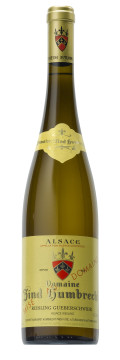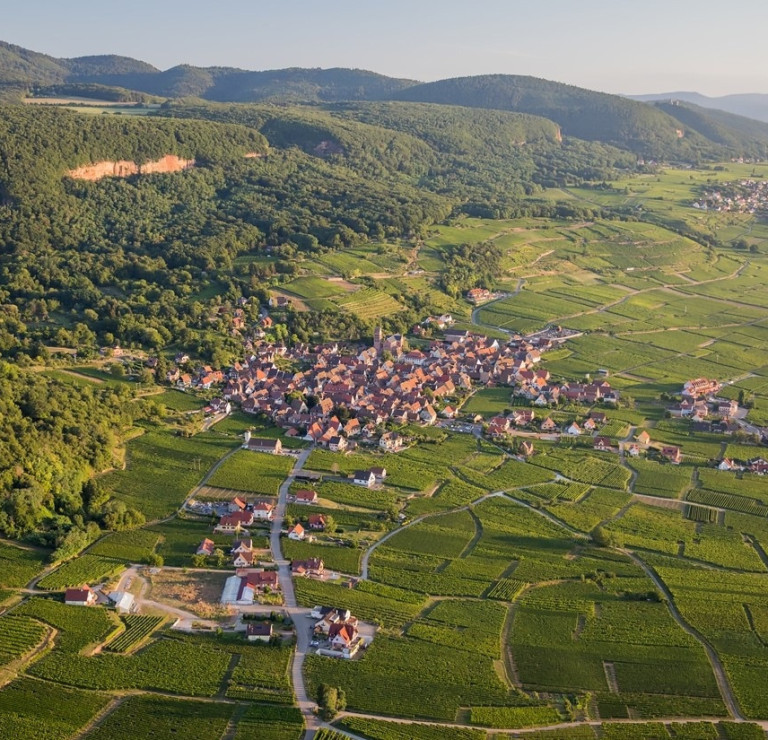
Technical presentation
| Bottling : | February 2010 |
|---|---|
| Acquired alcohol : | 13.5° |
| Residual sugar : | 4.7 g/l |
| Total acidity : | 4.6 g/l H2SO4 / (7.0 g/l Tartrique) |
| pH : | 3.1 |
| Yield : | 75 hl/ha |
| Average age of vines : | 35 years |
| Terroir : | Grand Cru Goldert |
| Sweetness index : | 1 |
| Soil : | East & South facing, Gentle slope, Limestone/calcareous/siliceous |
Description of the wine Riesling Gueberschwihr 2009
This Riesling is produced from a blend of now seven different vineyards located around the village of Gueberschwihr, all with marl limestone soils mixed with some sandstone (silicium). In fact, the base calcareous hills are sometimes covered with some thin sands coming from the sandstone Vosges mountains just above. This village enjoys a late ripening situation which often explains a slightly later harvest and perhaps less alcohol in the wines, but also slightly bigger crops in favourable vintages like 2009. The grapes were harvested healthy with good acidity. The fermentation seemed never to end, but the best of the wine, as it became very dry.

Tasting notes
02/2011 : This wine still shows the characteristic of its upbringing on the lees and the mineral influence of its calcareous origin. The nose shows mineral, stony flavours, showing that it will eventually develop classic mineral/petroly aromas. The palate is powerful, well structured. The vintage influence makes it quite broad shouldered and long. This is a very nice classic dry Riesling.

The Goldert Grand Cru of Gueberschwihr
The Goldert of Gueberschwihr is the only locality in Alsace where the geological substratum is composed solely of marine oolithic limestone. Traditionally, the majority of the Goldert is planted to Gewurztraminer and Muscat. These grape varieties are reputed for producing wines with great finesse, structure and a discreet, however complex, bouquet.